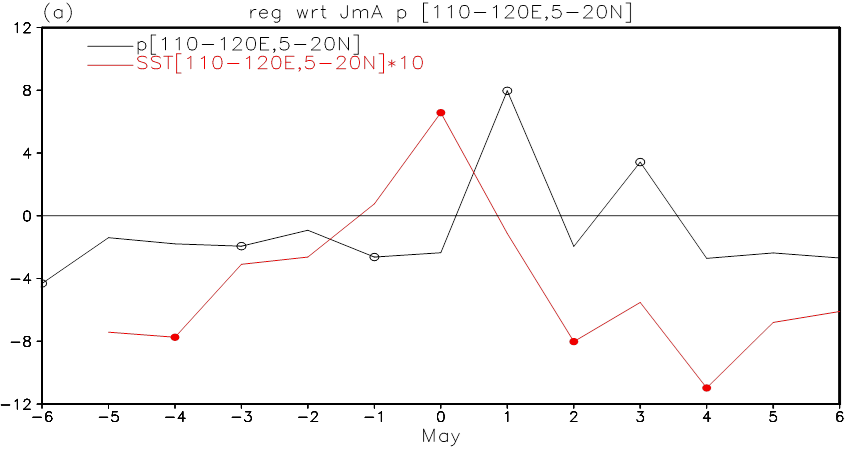
Climatological summer monsoon onset occurs around May over the North Indian Ocean and the South China Sea. Thus, the period from April to June signifies the transition from spring to summer. Boreal summer mean climate variability has been the focus of most previous studies. Yet, there have been few studies of climate variability in the spring to summer transition. The air-sea interaction processes in the transition season may contribute to the precipitation anomaly in summer, so unraveling the factors and processes for the climate variability during the spring to summer transition can help improve the prediction of summer rainfall.
The study of Prof. WU Renguang and his collaborators from the Institute of Atmospheric Physics of Chinese Academy of Sciences (IAP) showed that precipitation anomaly change from April to June may indicate summer (June–August) mean precipitation anomaly over the South China Sea and the Arabian Sea. They revealed a clear signal of local air–sea interaction in the precipitation anomaly change from April to June over the South China Sea, featuring a sequence of less precipitation, higher SST, more precipitation, and lower SST (Figure 1). The evolution of surface heat flux anomalies supports the air–sea interaction over the South China Sea during the transition season.

Figure 1 Monthly mean anomalies of area-mean precipitation (mm/day, black line) and SST (°C, red line) averaged over the region of 5°-20°N, 110°-120°E obtained by regression upon June minus April precipitation anomaly over the region of 5°-20°N, 110°-120°E. (WU and HU, 2015)
"In contrast, the April-June mean precipitation anomaly features a response to remote SST forcing and a local forcing of atmosphere on the ocean.” Prof. WU observed, “Over the Arabian Sea, local SST forcing contributes to both precipitation anomaly change from April to June and April-June mean precipitation anomaly.” A local negative feedback of atmosphere on SST is also observed in the Arabian Sea as in the South China Sea. The surface heat fluxes make a large contribution to local SST change before May in the South China Sea, but a small one in the Arabian Sea.
"Surface heat fluxes are important for local SST change after May in both the South China Sea and the Arabian Sea.” Prof. WU concluded.

86-10-68597521 (day)
86-10-68597289 (night)

52 Sanlihe Rd., Xicheng District,
Beijing, China (100864)

